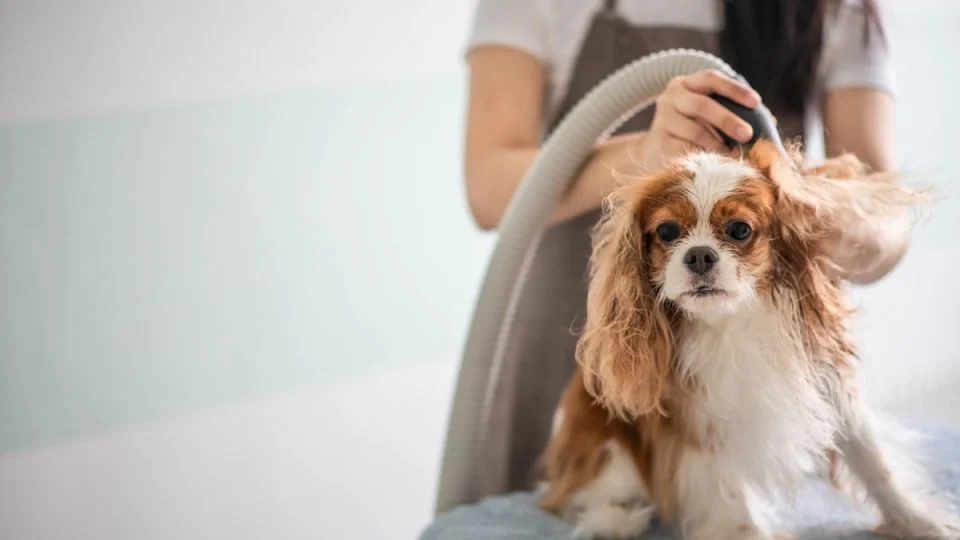When it comes to keeping your pets healthy, it’s important not to overlook oral hygiene. Even a small investment of time and effort can pay dividends for their overall health. Your pet’s teeth may look clean, but it’s under the gum line where bacteria can hide. Water additives and chew treats aren’t enough for removing plaque under the gum line, which is why you need to take extra steps for keeping your furry friend’s mouth clean.
Understanding proper oral care
Protecting oral health is important for many reasons. Poor dental hygiene can result in bad breath or halitosis, gingivitis, tooth loss, oral pain and organ damage.
Bad breath in both dogs and cats can be caused by a number of things, but it’s commonly the early signs of dental disease. Sadly, it’s estimated that 80% of dogs show signs of dental disease by the time they are 3 years old and for cats, as much as 70% of three year old kitties show signs of dental disease.
As any vet will tell you, removing food particles will help to prevent bacterial build up, which can lead to plaque formation and gum disease. Not doing so can cause your pet to develop gingivitis, which can lead to gum recession, root exposure and a weakening of the jawbone.
Plaque formation leads to periodontal disease and when periodontal disease becomes significant, pet’s can lose teeth. For those teeth not lost, they can become loose and diseased, which can cause regular discomfort and pain for your pet.
Bacteria from periodontal disease can release into your animals’ circulatory system, travelling through the body and causing damage to cardiac tissue. This can lead to endocarditis, a life-threatening inflammation of the inner lining of the heart’s chamber and valves. Bacteria in plaque can also cause permanent damage should it spread to the kidneys and liver.
The importance of brushing teeth
Dogs and cats need to have healthy gums and teeth, just like humans do. Proper oral care requires you to brush their teeth at least three times a week and take your pet for a professional dental clean once a year.
If you’ve never brushed your pet’s teeth before, it’s not too late to start. Your pet probably isn’t going to love you trying to brush his teeth the first few times, but give them some time to acclimatise (keep persisting even if it takes a while) and you’ll soon be on your way to better hygiene.
How to brush your dog’s teeth
Step 1. Prepare yourself with the right tools
The best dog toothbrush is the one you feel good about using. There are many different types of dog toothbrushes on the market, so it’s important you find one that’s comfortable to use.
A single-headed toothbrush is similar to that of a human’s toothbrush, except that they usually come with a curved end. The bristles are much softer than a human-designed toothbrush, which is why you should never use your old toothbrush to clean your dog’s teeth. The hardness of the toothbrushes we use can cause bleeding and sore gums in your pooch.
A double-headed toothbrush may see you brushing your dog’s teeth quicker, cleaning both sides of your dog’s teeth in one go. If you do it right, you can clean the top and bottom of your dog’s teeth with very little effort.
When it comes to toothpaste, select one that will make it easier for your dog to say yes to brushing. This means a toothpaste with a flavour you know your dog will like.
Enzymatic toothpaste will help reduce bacteria, which can lessen tartar buildup while also preventing bad breath.
Step 2. Prepare your dog for teeth brushing
Before you put toothpaste on your chosen toothbrush, let your dog get prepared for brushing. Allow your dog to sniff the toothbrush and move it around, and once they’ve determined it’s nothing to fear, pop some toothpaste on the brush and let him have a lick.
Step 3. Make it an enjoyable experience
If your dog likes having his teeth brushed it’s a much easier job for you to do. Positive reinforcement is the key, with treats being a quick reward followed by a walk or play. Some dog treats are designed to help improve your dog’s dental health so choose these when possible to complement your brushing.
Step 4. Use the right technique
Start with the front teeth and then work backwards. Brush in short bursts, stopping every 10 seconds for a quick treat and some positive reinforcement. Use a circular or up and down motion, depending on how you position yourself and what feels more natural. Get as close to the gum as possible, without actually brushing the gum. A good focus area is the crown of the tooth – this is where most of the plaque will be located.
Step 5. Create a routine
When you brush your dog’s teeth can have a big impact on how successful the brushing session is. Try to brush your dog’s teeth at the same time every day if you can, at a time when it’s calm and relaxing. The last thing you want to do is try to brush your dog’s teeth while the kids are running around and the dog wants to play. It’s worth noting that the more you brush your dog’s teeth, the easier brushing will get.
Step 6. Get a clean from a professional
No matter how hard you try, you’re never going to get your dog’s teeth completely clean. Once a year, your pooch will need to receive a deep clean from a professional, who will check for any underlying gum disease. A reputable vet will scale the teeth, which requires proper pain management and general anesthesia.
How to brush your cat’s teeth
Step 1. Prepare yourself with the right tools
Just like dog toothbrushes, there are a number of designs available that are specifically designed for use in cats. These include brushes with angled handles, small brushes that fit comfortably in your hand, and finger toothbrushes (designed to fit over the tip of your finger).
For some cats, using a very soft toothbrush designed for human babies is acceptable. it is acceptable to use a very soft toothbrush designed for use in human babies. You could also use gauze wrapped around a finger, or a cotton swab.
Ideally, you want to use a brush where the bristles can reach just below the gumline at the tooth/gum interface.
Cats should never, under no circumstances, have their teeth brushed with human toothpaste as the high level of fluoride can make your cat severely ill if ingested. Fluoride-free toothpaste is readily available for cats and is often flavoured with beef or chicken to make it more enticing.
Step 2. Prepare your cat for teeth brushing
Put a little toothpaste on your cat’s lips to accustom it to the taste. Try this once a day for a week. The next week, apply toothpaste to the tip of a cotton swab and lightly touch the gums. This will gently introduce the feeling of a toothbrush. Every time you do it, reward your cat with a treat. Once your cat is ready you can use the toothbrush to touch your cat’s gums. Start brushing one tooth at a time, spread over a couple of days.
Step 3. Choose a quiet time and place
Cats are routine animals and starting a teeth brushing routine is a great way to get your cat used to what will be happening. Select a small room in the house away from distractions and where you can close the door to seal off escape avenues. Place your cat on a surface such as a counter or tabletop or sit your cat in your lap.
Step 4. Make it an enjoyable experience
The more enjoyable the experience, the more likely your cat is to accept the teeth brushing process. Try finishing the brushing process by dipping the toothbrush in tuna water drained from a can of tuna fish. The water doesn’t have any beneficial dental or cleaning effects, but most cats like the taste of it which will provide a positive connection between the tuna juice and the tooth brushing experience.
Step 5. Use the right technique
Tilt your cat’s head to a 45-degree angle and gently pull back her lips using your thumb. With your index finger, gently pull down your cat’s lower lip. This should give you a good view of one side of your cat’s mouth.
Start at the back of the teeth as they are often the most important to brush. Gradually work your way forwards by gently rubbing toothpaste into the teeth in a circular motion until you reach the long canine teeth.
Step 6. Get a clean from a professional
No matter how hard you try, you’re never going to get your cat’s teeth completely clean. Once a year, your cat will need to receive a deep clean from a professional, who will check for any underlying gum disease.
If your cat is healthy, your cat will be given a mild anaesthesia so that the vet can take X-rays and view your cat’s dental health below the gum line. When undergoing the cleaning procedure, special tubing will be used to help breathing, while ultrasonic and manual scalers are used to clean teeth, then polish and add a protective sealant.
Teeth-Brushing Alternatives
There are some pets that no matter what you do, will not allow you to brush their teeth. This is where other dental care products can help keep a pet’s mouth healthy. Food and water additives or dental chews for dogs and cats should not be used in place of brushing, but these supportive products will be better than no oral care at all.
The bottom line is, do your best to make brushing your pet’s teeth an enjoyable and regular experience. If you’re having trouble, some oral care is better than no care.
Author’s Bio: Jacqui Coombe has been a prolific reader since childhood, and now channels her love of the written word into writing content on a range of topics from business, marketing and finance to travel and lifestyle. Jacqui is also a Principal Consultant specialising in Search + Content Marketing at international digital marketing agency Webprofits.

LinkedIn: https://www.linkedin.com/in/jacqueline-coombe/
Gravatar: https://en.gravatar.com/jacquicwrites







